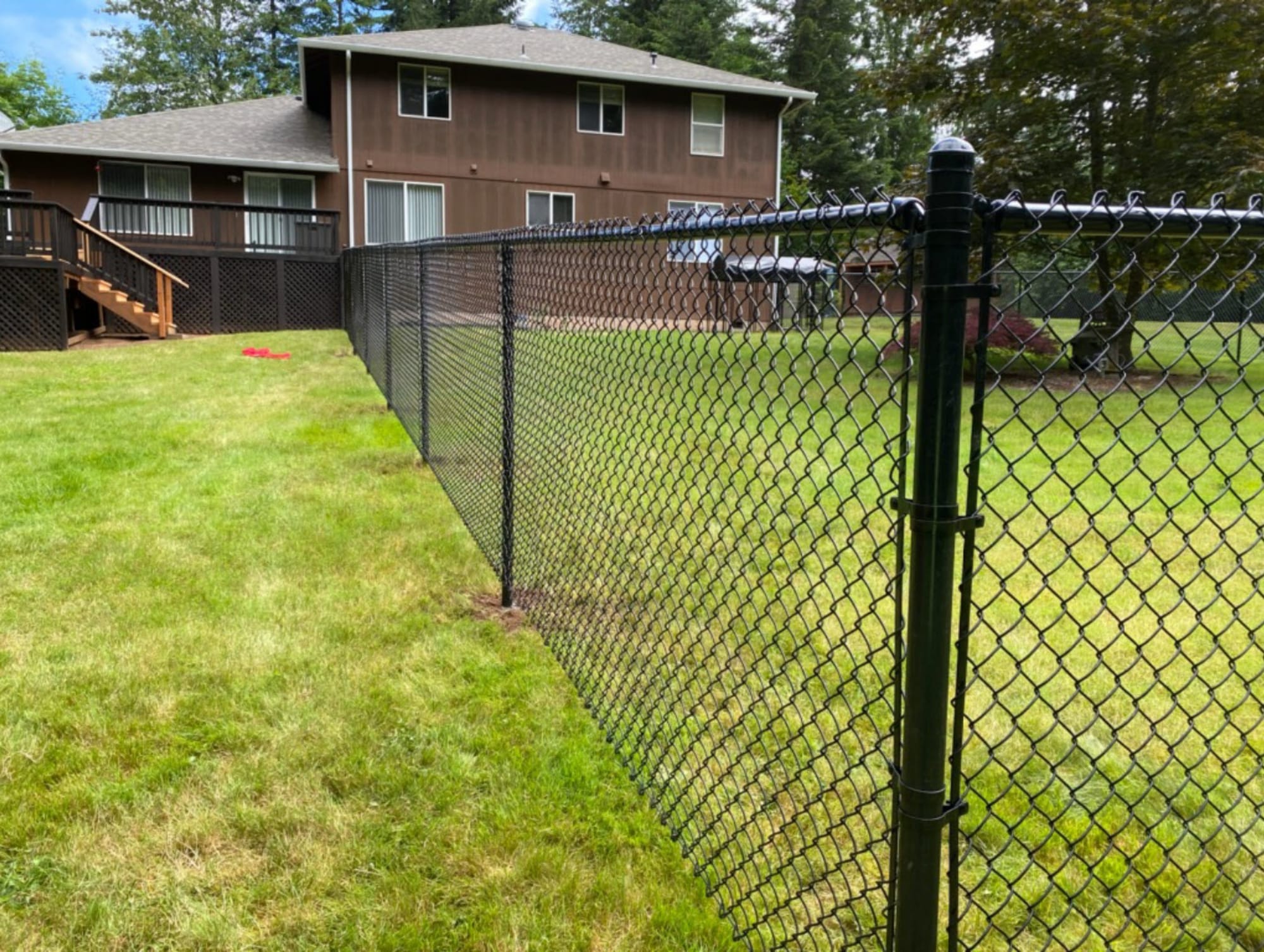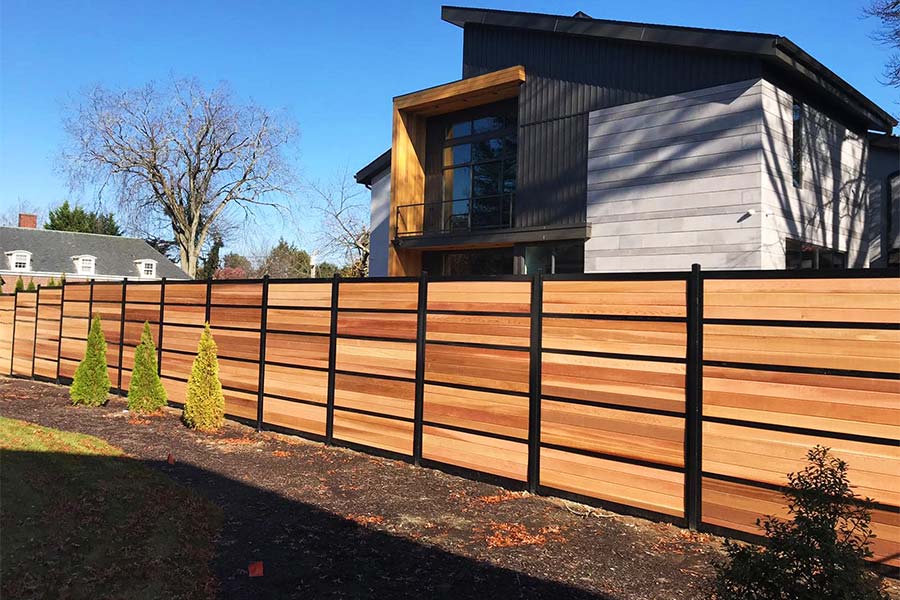All Categories
Featured
A wood fencing includes appeal and personality to any type of residential property, however to keep its elegance and performance, it needs normal maintenance. One of the most vital facets of fencing maintenance is paint or discoloration. Not just does this secure your fence from the aspects, but it likewise aids protect the wood's all-natural appearance. Lots of property owners question: Exactly how usually should I paint or stain my wood fencing?
The solution depends on numerous factors, including the kind of timber, the climate in your area, and whether the fence is stained or painted. Allow's break down the key factors to consider to aid you figure out the perfect timetable for paint or tarnishing your wood fence.
Sunlight Exposure: Fence areas with extreme sunshine are extra vulnerable to drying out, fading, and breaking. This implies you might require to paint or restain your fence every 2 to 3 years to safeguard it from UV damages. Rain and Moisture: Fence regions with heavy rain or high moisture can absorb dampness, triggering the timber to swell, warp, or rot. Staining can provide a safety barrier, yet you may need to restain every 2 years approximately to keep the timber secured and secured. Snow and Freezing Temperatures: If your fence remains in a location with cold winters months, cold and thawing cycles can stain or cause the paint to fracture and peel off. Depending upon your environment, you might require to paint or restain every 3 to 5 years. 2. Sort of Timber. The sort of timber made use of for your fence additionally impacts how frequently you must use paint or discolor. Different timbers respond in different ways to dampness and sunlight, so the maintenance schedule can vary.
![]()
Cedar and Redwood: These normally resilient woods withstand rot and pest damages, however they can fade gradually due to sun exposure. You might require to stain or seal it every 2 to 3 years if you desire to keep the wood's rich color. Pine and Fir: Softwoods like ache and fir are much more susceptible to weathering, and they often tend to soak up wetness more readily. Therefore, you might need to stain or repaint these timbers much more often, possibly every 1 to 2 years, to secure versus water damages and discoloration. Pressure-Treated Timber: Pressure-treated wood is made to stand up to rot and bug damage. Nonetheless, it still calls for securing to avoid wetness absorption. Depending on exposure, a great tarnish or sealer may require to be reapplied every 2 to 3 years. 3. Repaint vs. Discolor. Whether you paint or tarnish your fencing can additionally affect how typically it needs maintenance.
Paint: Repaint provides a thicker, more nontransparent layer of protection, obstructing UV rays and moisture. Paint can chip, peel, and crack over time, specifically in areas with severe climate conditions. Generally, painted fencings require to be painted every 3 to 5 years, but this can vary depending on direct exposure to the aspects. Discolor: Discolor permeates the timber, giving a much more all-natural look while using some protection against the sun and wetness. Tarnish has a tendency to use away quicker than paint, so you might require to restain your fence more frequently-- typically every 2 to 3 years. Nevertheless, the benefit of tarnish is that it doesn't peel off, making it much easier to maintain with time. 4. Signs That It's Time to Restain or paint. Even if you don't have a collection routine, there are a number of indications that show it's time to paint or restain your fencing:
Discoloring or Staining: If your fence has shed its rich shade and shows up discolored or grey, it's time to add a fresh coat of repaint or tarnish. Fracturing or peeling: If you notice peeling off paint or breaking stain, your fence is no longer fully protected, and it's time to repair or begin again. Water Absorption: A basic examination can help you identify if your fencing is still adequately sealed. Sprinkle some water on the surface area; if it grains up, the discolor or paint is still doing its work. If the water saturates right into the wood, it's time to reapply. 5. Correct Prep Work and Application. When it's time to paint or tarnish, appropriate preparation is essential for long-lasting outcomes. Clean the fencing extensively to get rid of mold, dust, or mildew, and repair any broken areas prior to using paint or tarnish. For the very best results, select a dry, moderate day for application-- stay clear of paint in extreme heat or humidity, as it can discolor or cause the paint to completely dry too rapidly or erratically.
![]()
Final thought. Generally, you need to intend to paint or stain your wood fencing every 2 to 3 years, though the specific routine will depend on your climate, the kind of timber, and whether you have actually repainted or tarnished the fence. Regular maintenance not only helps maintain your fencing looking terrific yet also expands its life expectancy by securing the timber from dampness, UV rays, and various other environmental factors. By remaining on top of this job, you'll guarantee your fencing stays both functional and attractive for years to find.
The solution depends on numerous factors, including the kind of timber, the climate in your area, and whether the fence is stained or painted. Allow's break down the key factors to consider to aid you figure out the perfect timetable for paint or tarnishing your wood fence.
- Climate and Weather Condition Conditions. The climate in your area plays a significant function in how typically your fence needs maintenance. Fences in areas with harsh weather, such as high humidity, hefty rain, or intense sun direct exposure, will call for even more constant paint or discoloration than those in warm climates.
Sunlight Exposure: Fence areas with extreme sunshine are extra vulnerable to drying out, fading, and breaking. This implies you might require to paint or restain your fence every 2 to 3 years to safeguard it from UV damages. Rain and Moisture: Fence regions with heavy rain or high moisture can absorb dampness, triggering the timber to swell, warp, or rot. Staining can provide a safety barrier, yet you may need to restain every 2 years approximately to keep the timber secured and secured. Snow and Freezing Temperatures: If your fence remains in a location with cold winters months, cold and thawing cycles can stain or cause the paint to fracture and peel off. Depending upon your environment, you might require to paint or restain every 3 to 5 years. 2. Sort of Timber. The sort of timber made use of for your fence additionally impacts how frequently you must use paint or discolor. Different timbers respond in different ways to dampness and sunlight, so the maintenance schedule can vary.

Cedar and Redwood: These normally resilient woods withstand rot and pest damages, however they can fade gradually due to sun exposure. You might require to stain or seal it every 2 to 3 years if you desire to keep the wood's rich color. Pine and Fir: Softwoods like ache and fir are much more susceptible to weathering, and they often tend to soak up wetness more readily. Therefore, you might need to stain or repaint these timbers much more often, possibly every 1 to 2 years, to secure versus water damages and discoloration. Pressure-Treated Timber: Pressure-treated wood is made to stand up to rot and bug damage. Nonetheless, it still calls for securing to avoid wetness absorption. Depending on exposure, a great tarnish or sealer may require to be reapplied every 2 to 3 years. 3. Repaint vs. Discolor. Whether you paint or tarnish your fencing can additionally affect how typically it needs maintenance.
Paint: Repaint provides a thicker, more nontransparent layer of protection, obstructing UV rays and moisture. Paint can chip, peel, and crack over time, specifically in areas with severe climate conditions. Generally, painted fencings require to be painted every 3 to 5 years, but this can vary depending on direct exposure to the aspects. Discolor: Discolor permeates the timber, giving a much more all-natural look while using some protection against the sun and wetness. Tarnish has a tendency to use away quicker than paint, so you might require to restain your fence more frequently-- typically every 2 to 3 years. Nevertheless, the benefit of tarnish is that it doesn't peel off, making it much easier to maintain with time. 4. Signs That It's Time to Restain or paint. Even if you don't have a collection routine, there are a number of indications that show it's time to paint or restain your fencing:
Discoloring or Staining: If your fence has shed its rich shade and shows up discolored or grey, it's time to add a fresh coat of repaint or tarnish. Fracturing or peeling: If you notice peeling off paint or breaking stain, your fence is no longer fully protected, and it's time to repair or begin again. Water Absorption: A basic examination can help you identify if your fencing is still adequately sealed. Sprinkle some water on the surface area; if it grains up, the discolor or paint is still doing its work. If the water saturates right into the wood, it's time to reapply. 5. Correct Prep Work and Application. When it's time to paint or tarnish, appropriate preparation is essential for long-lasting outcomes. Clean the fencing extensively to get rid of mold, dust, or mildew, and repair any broken areas prior to using paint or tarnish. For the very best results, select a dry, moderate day for application-- stay clear of paint in extreme heat or humidity, as it can discolor or cause the paint to completely dry too rapidly or erratically.

Final thought. Generally, you need to intend to paint or stain your wood fencing every 2 to 3 years, though the specific routine will depend on your climate, the kind of timber, and whether you have actually repainted or tarnished the fence. Regular maintenance not only helps maintain your fencing looking terrific yet also expands its life expectancy by securing the timber from dampness, UV rays, and various other environmental factors. By remaining on top of this job, you'll guarantee your fencing stays both functional and attractive for years to find.
Latest Posts
Experience the Style of Hardwood Flooring with Carpet Interiors Floor & Home
Published Apr 19, 25
1 min read
Exploring the Perks of WyHy Share Interest-bearing Account
Published Apr 19, 25
1 min read
Stress-Free Birthday Celebration Celebration Preparation at FunCity Resort
Published Apr 19, 25
1 min read
More
Latest Posts
Experience the Style of Hardwood Flooring with Carpet Interiors Floor & Home
Published Apr 19, 25
1 min read
Exploring the Perks of WyHy Share Interest-bearing Account
Published Apr 19, 25
1 min read
Stress-Free Birthday Celebration Celebration Preparation at FunCity Resort
Published Apr 19, 25
1 min read